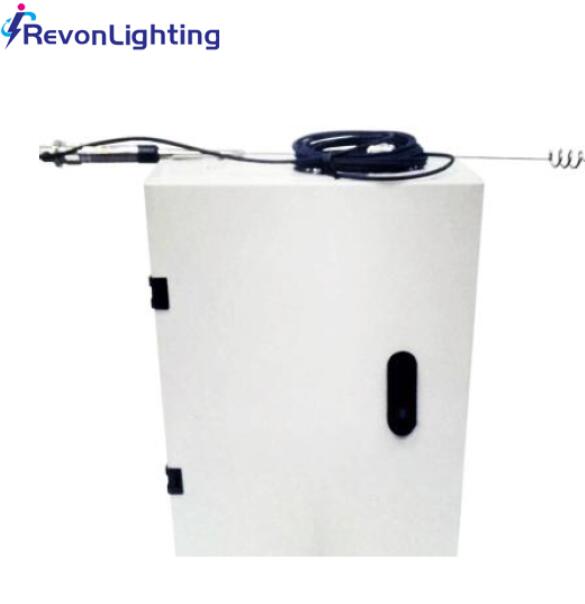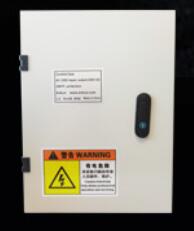In the meticulously ordered realm of aviation safety, visibility is paramount. While obstruction lights serve as the visible beacons safeguarding airspace, their collective intelligence and reliability are orchestrated from a single, critical point: the aviation light control panel. This unit is the operational nexus, the command center that transforms individual lamps into a coherent, fail-safe system. Far more than a simple switchboard, the modern aviation light control panel embodies the sophisticated management and unwavering vigilance required to protect aircraft from ground-based hazards, day and night, in all conditions.
The fundamental purpose of any aircraft warning light system is to ensure a structure is conspicuously marked. However, the environment is dynamic. The brilliance required on a hazy afternoon differs from that needed on a clear night, and a system failure during a storm poses a catastrophic risk. This is where the aviation light control panel proves indispensable. It acts as the system's brain, continuously processing inputs and executing commands to guarantee optimal performance and, most critically, immediate fault response. Its existence is a testament to the aviation industry's move from passive safety equipment to active, intelligent management systems.

A primary function of the aviation light control panel is automated operation based on ambient light. Utilizing a highly sensitive photocell or an integrated astronomical clock that calculates sunrise and sunset times based on geographic coordinates, the panel automatically activates the appropriate lighting at dusk and deactivates it at dawn. This ensures unwavering compliance with regulatory mandates without human intervention, eliminating the risk of human error from manual switching. For systems with dual tiers—such as high-intensity white strobes for daytime and medium-intensity red lights for nighttime—the panel manages the transition between these states seamlessly.
| aviation light control panel |
However, the true sophistication of a modern panel lies in its response to real-time visibility conditions. Advanced systems are integrated with a meteorological optical range (MOR) sensor, which measures actual visibility in kilometres. While a photocell only detects darkness, an MOR sensor detects obscuration caused by fog, rain, snow, or dust. The aviation light control panel receives this data and can override its time-based settings. On a dark but clear night, it might keep lights on low intensity to reduce community light pollution. The instant visibility drops below a safety threshold, the panel commands the system to escalate to high intensity, ensuring maximum conspicuity precisely when it is needed most. This dynamic response is a cornerstone of modern aviation safety.

Perhaps the most critical duty of the aviation light control panel is ensuring absolute power reliability. A dark obstruction is an immediate and severe hazard. Therefore, these panels are designed with integrated power conversion and backup management. They continuously condition incoming mains power and monitor its integrity. Upon detecting any failure or significant fluctuation, the panel instantaneously and automatically transfers the entire load to a backup source, typically a bank of batteries or an uninterruptible power supply (UPS). This transition happens within milliseconds, ensuring zero interruption to the light output. The panel will then manage the backup power, often initiating a communication alert while preserving energy for as long as possible.
| aviation lights control panel |
The evolution of these panels into networked devices has revolutionized maintenance paradigms. The contemporary aviation light control panel is a hub for system-wide diagnostics. It constantly monitors the electrical current flowing to each individual lamp and fixture. Using sophisticated algorithms, it can distinguish between a healthy lamp, a burned-out bulb, a faulty ballast, or a damaged cable. Upon detecting a fault, its first action is often to activate a redundant lamp within the same fixture. Its second, and equally vital, action is to generate a detailed alarm.
This capability is central to the concept of Remote Monitoring and Control (RMC). Equipped with communication modules—such as GSM, 4G/5G, Ethernet, or satellite—the control panel can transmit its status and any fault alerts to a central monitoring station or directly to maintenance personnel via SMS or email. This allows a technician to know the exact nature and location of a fault on a remote structure before even dispatching, enabling first-time-fix repairs and dramatically reducing system downtime. This proactive approach is a monumental shift from the old model of reactive, scheduled physical inspections.
In complex installations like major skyscrapers or extensive wind farms, the aviation light control panel manages intricate lighting schemes. For a cluster of wind turbines, the panel does not simply activate every light. It executes a predefined program that only lights the perimeter turbines, clearly defining the hazard zone for pilots. Furthermore, it ensures that all strobe lights flash in perfect synchrony, eliminating the disorienting "christmas tree effect" that random flashing can cause. This level of coordinated control is only possible through a centralized, intelligent panel.
The aviation light control panel is the unsung hero of ground-based aviation safety. It is the decisive component that imbues a simple light with intelligence, reliability, and responsiveness. By automating operation, responding to real-time weather, guaranteeing power continuity, and enabling predictive maintenance, it elevates obstruction lighting from a passive warning to an active, managed safety system. As airspace becomes more complex with the advent of urban air mobility and drone operations, the role of this control nerve center will only expand, solidifying its position as the indispensable command post in the perpetual mission to safeguard flight.